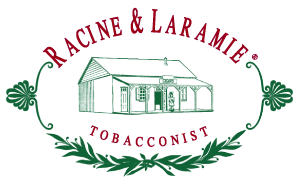
Master blenders combine varieties of tobacco, curing and flavoring methods, and cut to create enjoyable pipe tobaccos. Here is a rundown of some pipe tobacco basics so when your friend asks if you want to try his aromatic vanilla burley cake you won’t ask him if it is gluten free.
Tobacco Families for Pipe Tobacco
Burley tobacco is slow burning with a low natural sugar content and high nicotine. It gets used often to make a base for aromatic blends because it absorbs flavor and burns cool and even. After being cut in the field Burley is allowed to air cure for months, but does not have any heat fermentation or smoke curing of the leaf. Here is an example of how Burley gets used in a blend.
Virginia tobaccos are naturally high in sugar content and flue cured (high heat in an enclosed space). After it is cured Virginian varietals have a light and sweet flavor. Inexperienced smokers may find that Virginia tobaccos can cause tongue bite if smoked too quickly. Like all tobaccos with high natural sugar, they age well and improve over time. It’s sometimes called ‘bright’ tobacco because of its lighter color. Click here for a fine example of Virginia tobacco.
Oriental tobaccos have smaller leaves that are sun cured to produce a lighter golden colored leaf that is prized for fragrance and dryness. It has a distinctive flavor that gets included in English blends, like our Golden Bull blend.
Curing and Flavoring
Latakia is Oriental tobacco that has been fire cured after it has been sun cured. The smoke adds a spicey-smokey note. Latakia can have strong flavors and is used like a ‘spice’ in tobacco blends. It is commonly used in Balkan, Scottish, and English blends. Look here for an example of an English Latakia blend.
Cavendish refers to a method of curing and cutting tobacco. Cavendish is prized for bringing out the sweetness in tobacco. This is done by heating the tobacco with fire or steam so fermentation can bring the sweet flavors in the tobacco forward. Cavendish blends can also have flavorings added, so you might see cherry cavendish, rum cavendish, vanilla cavendish and more! Our popular Daniel Boone tobacco is a cavendish.
Perique tobacco is burley that has been packed in oak barrels under pressure for fermentation. Over the course of a year or more the tobacco is removed, rested, and refermented many times. The result is a strong flavored tobacco with a dark appearance.
Flavoring and adjustments – Tobacco can be ‘cased’ or wetted with mixtures that may include sugars, alcohols and flavorings. After the tobacco is flavored it is dried so it may be smoked, but the flavoring remains on the tobacco. Some flavored tobaccos use ‘top flavoring’ which is a lighter spray over the tobacco that leads to a lighter more delicate flavoring. Tobacco that have non-tobacco flavorings or aroma added to them are called aromatic. Cherry pipe tobacco is a classic, but flavorings come in a wide range of bold or subtle unique flavors.
Cuts
Ribbon tobacco is cut into narrow strips. It does not need any additional preparation such as ‘rubbing out’ before using. This is the most common style of pipe tobacco. Sample our sweet John to see what we mean.
Shag is ribbon tobacco that is cut very narrow and long. This is a cut that is also seen in cigarette blends. You can see a shag cut tobacco here.
Cake or plug tobacco is tobacco that has been compressed into a compact block. The process can help the flavors of different tobaccos used in the mix to harmonize as it ages. To use this tobacco the smoker cuts off a bit of the block and spreads it out.
Flake cut is sliced of a compressed tobacco cake. You can smoke part of the flake or rub it out into ribbons before smoking it. you can also buy this style of tobacco ‘ready rubbed’. You can see an example here.
Rope and twist tobacco is just that, tobacco that has been made into a long twist. Rope tobacco was a major way tobacco was sold in the past, but is unusual now. Cutting the rope results in disks of pipe tobacco that can be called a coin. Check out an example of ‘coin cuts’ here.
